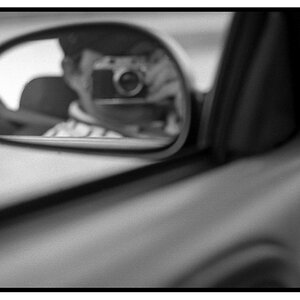Infidel
TPF Noob!
- Joined
- May 21, 2010
- Messages
- 490
- Reaction score
- 22
- Location
- Western MA
- Can others edit my Photos
- Photos OK to edit
This question has been nagging at me for some time now. I've read several instances of how many third party lenses are a great value, often accompanied by the caveat that it must be a good copy, as several copies have front or back focusing issues. How can one lens focus perfectly on a camera, while another lens fails to do so, on the same camera?
It is my understanding that in most DSLR systems, focus sensing is through-the-lens, with phase detection sensors in the body, behind/beneath the mirror. These sensors essentially determine whether or not the image is in focus, and provide data to the focus motor (either in the lens or in the body) to adjust the focus until accurate focus is detected at the sensor. As I understand it, it's a pretty straightforward negative feedback system. Further, when both my camera and lens are in AF mode, I can't release the shutter unless the focus confirmation dot is illuminated.
How then, can a bad copy of a lens result in OOF images? It's the camera, not the lens, that decides whether or not the image is focused.
Could someone either explain this or point to me a resource? My apologies if this has been covered before; my searching didn't yield what I was looking for.
It is my understanding that in most DSLR systems, focus sensing is through-the-lens, with phase detection sensors in the body, behind/beneath the mirror. These sensors essentially determine whether or not the image is in focus, and provide data to the focus motor (either in the lens or in the body) to adjust the focus until accurate focus is detected at the sensor. As I understand it, it's a pretty straightforward negative feedback system. Further, when both my camera and lens are in AF mode, I can't release the shutter unless the focus confirmation dot is illuminated.
How then, can a bad copy of a lens result in OOF images? It's the camera, not the lens, that decides whether or not the image is focused.
Could someone either explain this or point to me a resource? My apologies if this has been covered before; my searching didn't yield what I was looking for.



![[No title]](/data/xfmg/thumbnail/37/37604-7ad625e983f92f880eb65a264eeef5e4.jpg?1619738148)




![[No title]](/data/xfmg/thumbnail/37/37605-90c8efaef5b7d1f52d4bf8e7dfd33673.jpg?1619738148)




![[No title]](/data/xfmg/thumbnail/32/32717-74f4cee577117aa4476c9eb68fec51c7.jpg?1619735622)